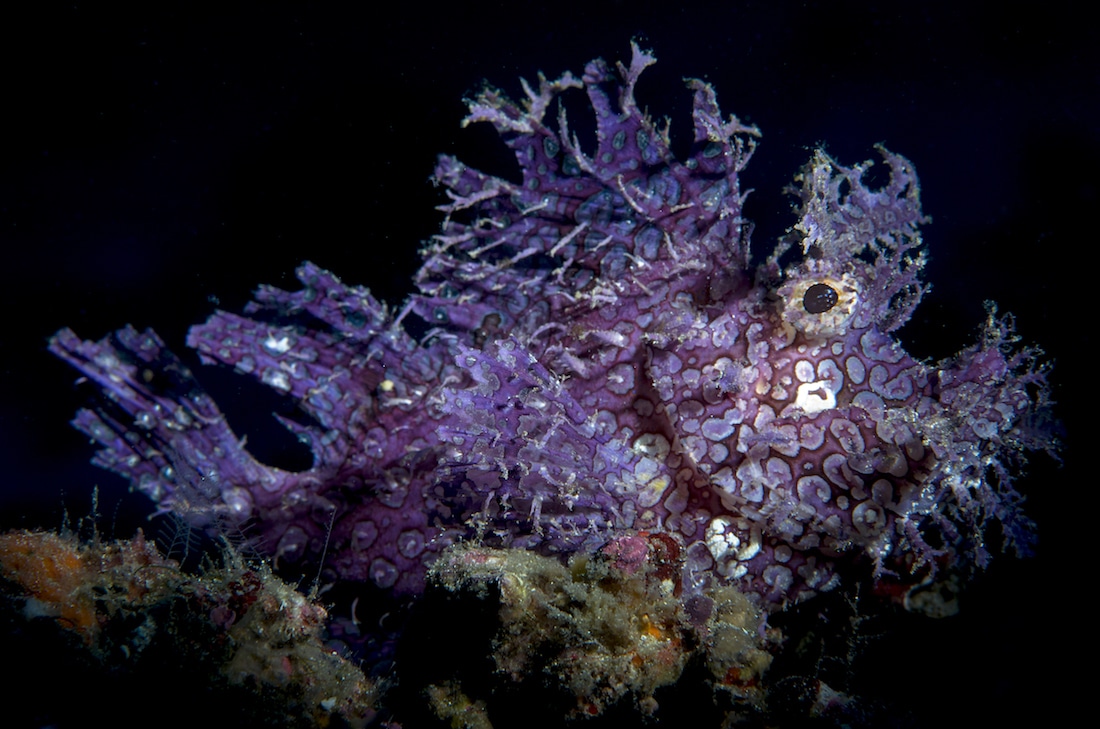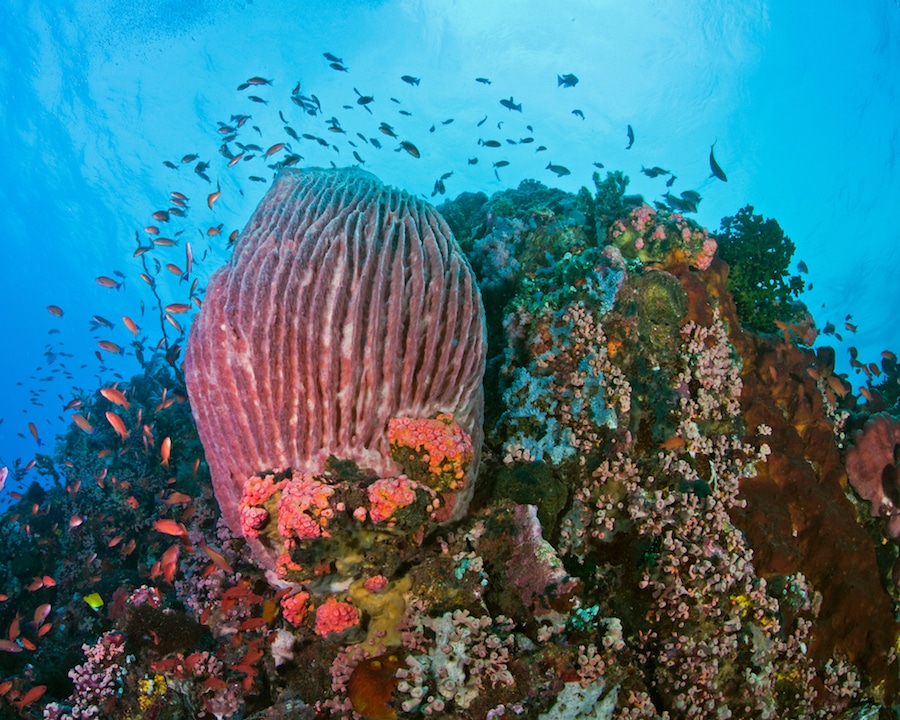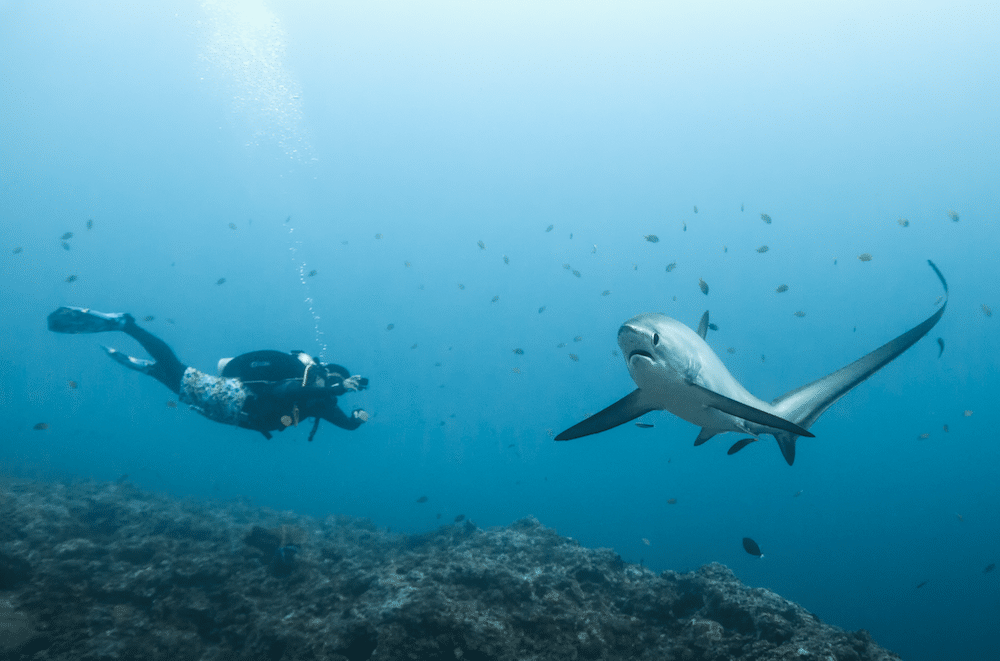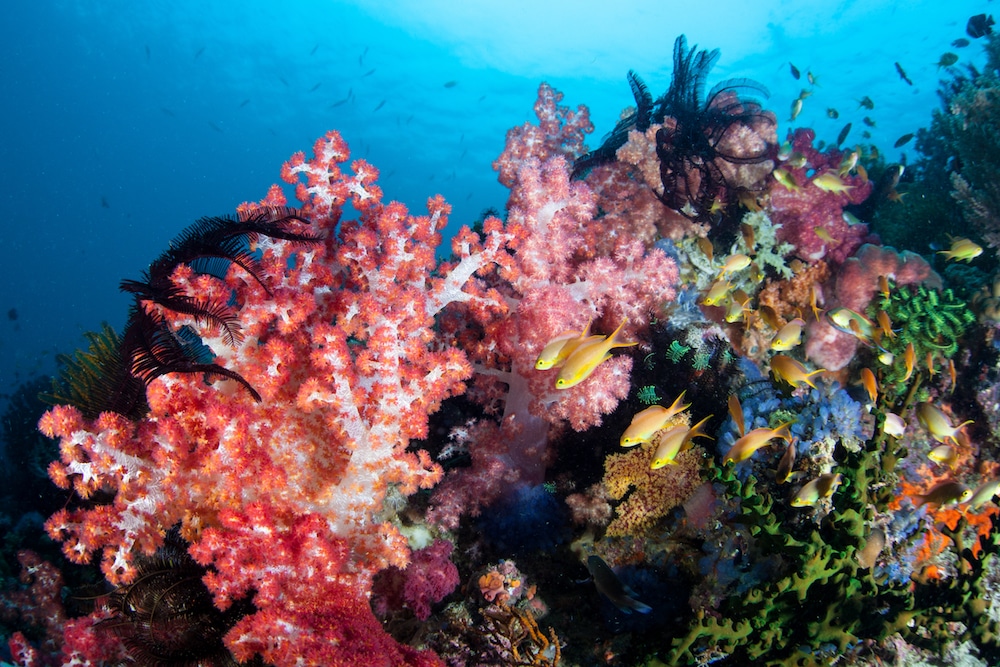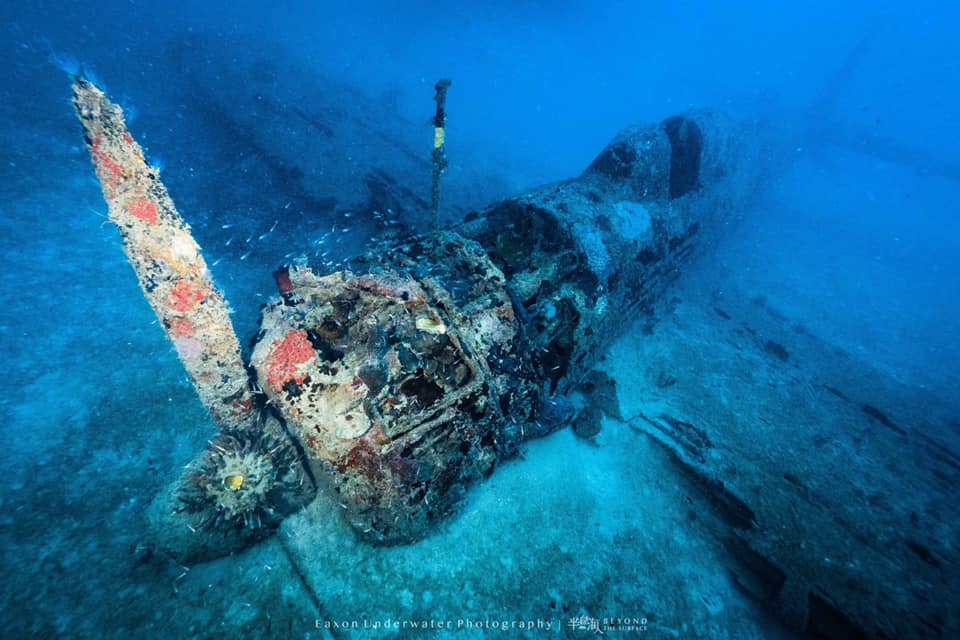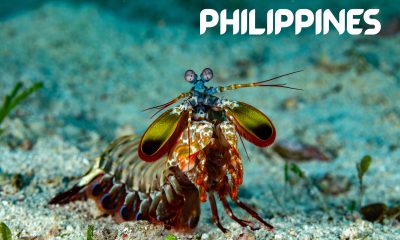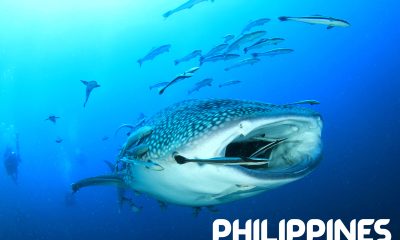News
These 8 Dive Spots in the Philippines are known to be the best in Asia
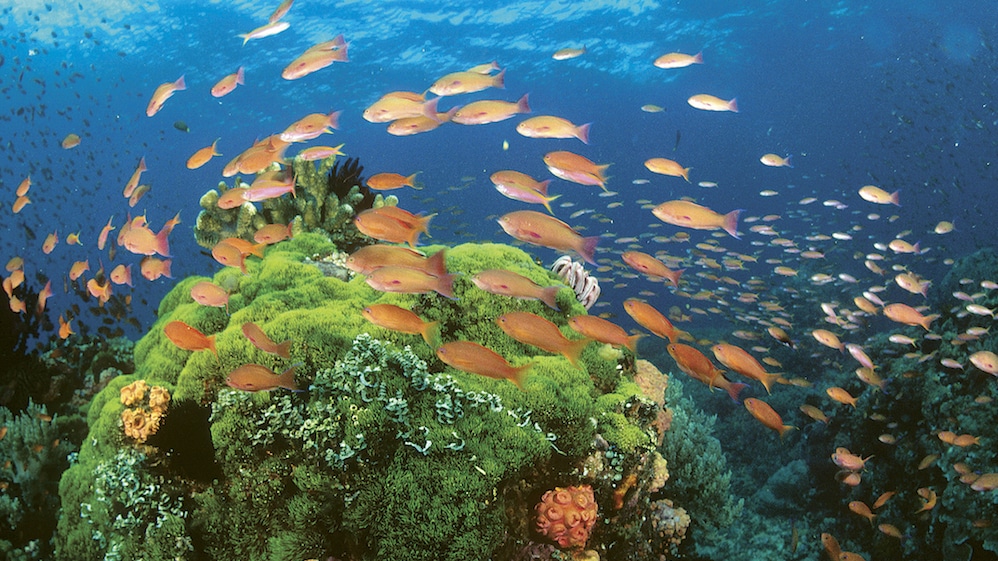
The Philippines has, once again, been declared as Asia’s Leading Dive Destination by the 28th World Travel Awards. This is now the third consecutive year that the country won this title. It has undeniably some of the best diving spots in Asia, with adventures that await beginners and professional divers who want to experience the thrill of roller-coaster drift dives. Underwater photography enthusiasts will enjoy documenting the diverse marine life that thrives in the clear tropical waters.
The archipelagic state is part of the heart of the Coral Triangle, the world’s center of marine biodiversity. It has the third-largest area of coral reef in the world at 25,060 km2 that is home to 75% of the world’s coral species and an abundant biodiversity that includes 3,000 species of fish. The government, environmental organizations, and local residents are working together to protect this rich marine biodiversity.
“We are very happy that the country’s mesmerizing dive spots remain the best among Asia in the recent 2021 World Travel Awards. On behalf of the Philippines Department of Tourism and our tourism workers and stakeholders, we thank everyone who voted for the Philippines. We will continue to protect and preserve our seas and marine wildlife so that more people can witness our rich and mesmerizing underwater resources,” said Tourism Secretary Berna Romulo-Puyat.
The Philippines is a vibrant, colorful country and this extends to the marine life that is thriving under its seas. More Fun Awaits in the Philippines as the Philippines Department of Tourism is preparing its popular diving sites and at the same time developing its new dive attractions and circuits that promote sustainable tourism. Health protocols are also being put into place at each destination for the safety of travelers while showcasing the breathtaking beauty of the Philippine seas.
In fact, The Department of Tourism (DOT) has announced the vaccination of more than 95% of tourism workers employed in accredited dive establishments across the Philippines, signalling the readiness of this niche market to the eventual reopening of the country to foreign visitors.
Get ready to dive into these amazing underwater spots waiting for your visit when international travel resumes.
- Tubbataha Reef, Puerto Princesa
The Tubbataha Reefs Natural Park is a UNESCO World Heritage Site which is said to be one of the country’s oldest ecosystems. It covers 96,828 hectares of underwater adventures. This atoll reef has a very high density of marine biodiversity, with more than 700 fish species, over 360 coral species, 11 shark species, and 13 dolphin and whale species already been recorded, and its North Islet serving as a nesting site both for birds and two species of endangered marine turtles – the green turtles and hawksbill turtles. The site has a spectacular 100-m perpendicular wall, extensive lagoons and two coral islands, with exciting pelagic action involving white tip reef sharks, manta rays, and whale sharks.
- Anilao, Batangas
Anilao, in the Municipality of Mabini, is located just a short drive away from the Philippines’ capital of Manila. This has made it a haven for weekend diving enthusiasts from the city, especially those who are into underwater photography. It is located along the Verde Island Passage between Batangas and Mindoro, which is considered as the center of marine shore fish biodiversity with 319 species swimming in its blue waters that coral taxonomist Douglas Fenner says is home to 74 genera of hard corals. Anilao is a destination for both macro and muck diving enthusiasts, with rare critters like rhinopias, and colorful nudibranchs. It is also a perfect place to perfect blackwater and bonfire diving skills in macrophotography.
- Dauin and Apo Island Dumaguete
The Municipality of Dauin has many dive spots for different levels of enthusiasts. These spots are protected marine sanctuaries that look after the sea’s biodiversity. Dauin is a big draw for those who are into muck diving, owing to the fascinating tiny creatures that dwell camouflaged along the corals, sea grass, and rock formations. Exciting sightings can start close to the shoreline, and these include different kinds of pipefishes, razorfish, frogfishes, sea horses, wasp fishes, snake eels, sea moths, dragonettes, flounders, snappers, stargazers, and crabs and turtles.
A scenic 30-minute boat ride from Dumaguete brings divers to Apo Island, a marine sanctuary organized by its local community. It offers myriad opportunities to explore on the ground with its volcanic rock formations, and undersea where 400 coral species where over 650 species of fish reside. There is a community of sea turtles that don’t mind swimming serenely alongside divers and having these awesome moments captured on camera. For a feeling of exclusivity, book a stop at the Marine Sanctuary found southeast off of Apo Island, where only 100 divers are allowed per day to preserve its ecological balance.
- Apo Reef Natural Park, Occidental Mindoro
Apo Reef is the largest atoll-like coral reef in the Philippines. Covering an area of 34 square kilometers, it is the second largest connecting coral reef in the world after the Great Barrier Reef of Australia. The pristine waters of the 30-meter deep channel are teeming with 385 species of fish have been identified in the area, including angel fishes, parrot fishes, jacks, and trevallies. Divers can also encounter reef sharks, moray, giant squid and giant clams. It has a mangrove forest which serves as source of food, spawning ground, and sanctuary of several marine and bird species.
Among that activities available for travelers are scuba diving, snorkeling, kayaking, lagoon rafting, and watching the birds, dolphins and turtles that abound in the area.
- Puerto Galera, Mindoro and Verde Island
The name Puerto Galera is Spanish for Port of the Galleons for the trading vessels that would anchor off its shores of this place. Today, it is popular for its numerous diving spots as part of the Verde Island Passage of the Coral Triangle of Asia. Its clear waters allow for high visibility that is perfect for diving among the hard and soft varieties of corals that house about 60 percent of the world’s shore fish. Puerto Galera is part of the Dive and Drive tourism circuit that has been developed by the Department of Tourism that includes important dive sites like Ticao Island in Masbate and Anilao in Batangas.
If the Coral Triangle is considered as the underwater Amazon Forest, Verde Island is at the center of its heart. The Verde Island Wall –two rocks jutting out southeast of the island is considered as the best dive sites in the Philippines, with excellent visibility and lot so nooks and crannies to explore. Colorful corals are home and playground to white tips and other sharks, mantas, tuna and jacks with pelagics like parrotfish, unicorn fish, and Napoleons adding even more color to the visual impact of clouds of anthias. For a spinning good time, head out to the Washing Machine, so-called for its wild current that is popular with divers who are looking to enjoy a unique thrill.
- Cebu (Malapascua, Moalboal)
Located at the Northern part of Cebu, Malapascua Island is a must-visit for divers to enjoy the rare and thrilling experience of swimming with thresher sharks. The pristine waters of this tropical island paradise offers more unforgettable adventures. After a 5 a.m. thresher shark dive, enthusiasts can also go on shipwreck explorations, deep and tek dives, dusk mandarin fish spotting, and night dives to observe rare nocturnal creatures. Another dive attraction is the underwater tunnel that runs through the length of nearby Gato Island, a home to white tip sharks. Here, divers can explore undercuts and small caves to discover the secret lives of marine animals such as cuttlefish, banded sea snakes, crabs, anthas, and lionfish. The beach life is just as grand, where you can walk anywhere in flip-flops to enjoy the charming, relaxed life on the island.
Moalboal in the local dialect means bubbling waters, owing to its freshwater springs. Its dive sites offer an array of exciting experiences, with Copton Point already offering two – the Copton Deep that has an aircraft wreck to explore and Copton Shallow that has table corals and shallow corals through which dart a wide variety of fish. Likened to the effects of stained-glass windows at church, Pescador Cathedral is a magnificent cave that captures shafts of light at midday to bathe the surroundings with a heavenly glow.
- Bohol (Anda, Balicasag, and Cabilao)
Beautiful Bohol, with its breathtaking natural wonders such as the Chocolate Hills and Man-Made Mahogany Forest, along with historic sites such as its centuries-old churches is also a haven for divers. The warm sands of Bohol’s AIona Beach is the jump-off point for dive safaris to Anda, Balicasag, and Cabilao.
Anda is a relatively new dive destination and it is being developed with sustainable tourism in mind. Conservation efforts are supported by the friendly community, with guides who expertly help divers find the best spots. Coral-covered shallow flat reefs are home to a host of creatures such as hawkfish, fire urchins, and Coleman shrimp. Schoolers such as snappers, groupers, puffers and turtles like to converge in these clear waters. Cabilao has the small island charm. It has only five barangays or communities, but 20 dive sites. Underwater life ranges from small soft corals to large gorgonian sea fans. The Lighthouse 1 and 2 are popular dive photography sites. Balicasag is a protected area because it is a sea turtle meeting, breeding, and feeding area. There is a site that is literally named Diver’s Heaven, because here, each dive is a good dive.
- Coron Wreck Diving, Palawan
Coron has been described as one of the best spots in the World for wreck diving. There are 24 Japanese ships that were sunk in the area by an American air raid during World War II and the 12 wrecks that have been discovered are now home to corals and other forms of aquatic life. The shipwrecks are very well preserved and are all located in quite shallow water starting at 6 to 10 meters which is perfect for recreational diving. For enthusiasts, there are also dive courses which may be booked through Dugong Dive Center.
Safe and Protected
The Philippines is proactive in protecting its marine resources, not only through government mandates but also through community engagement. The locals of the areas understand the importance of caring for the environment as their source of livelihood and as their legacy to the next generations. The Philippine Department of Tourism works closely with the local government units of the popular dive sites and new circuits in order to ensure that the marine biodiversity is allowed to thrive through responsible and sustainable tourism efforts.
Aside from showcasing these underwater attractions to the world, the DOT is preparing for the return of dive enthusiasts with standardized health and hygiene protocols for a safe journey throughout the country. In addition, this fascinating destination has received the Safe Travels stamp from the World Travel and Tourism Council (WTTC) which selects destinations that meet international health and safety standards to travel without worries.
To know the latest updates and travel advisories about the Philippine, visit www.itsmorefuninthephilippines.co.uk or download the Travel Philippines app at the Google Play and Apple Store.
Header Image: Robert Yin
Blogs
A Welcome Return (Part 2)

I’m hoping by now you would have read Part 1 of my ‘A Welcome Return’, all about joining La Galigo Liveaboard once again, but this time exploring the delights of Komodo National Park.
The trip was really starting to hot up, with great scenery above the water and great encounters underwater. It was the little critters that were stealing the show and it was about to get even better. Here is how the rest of the trip panned out…
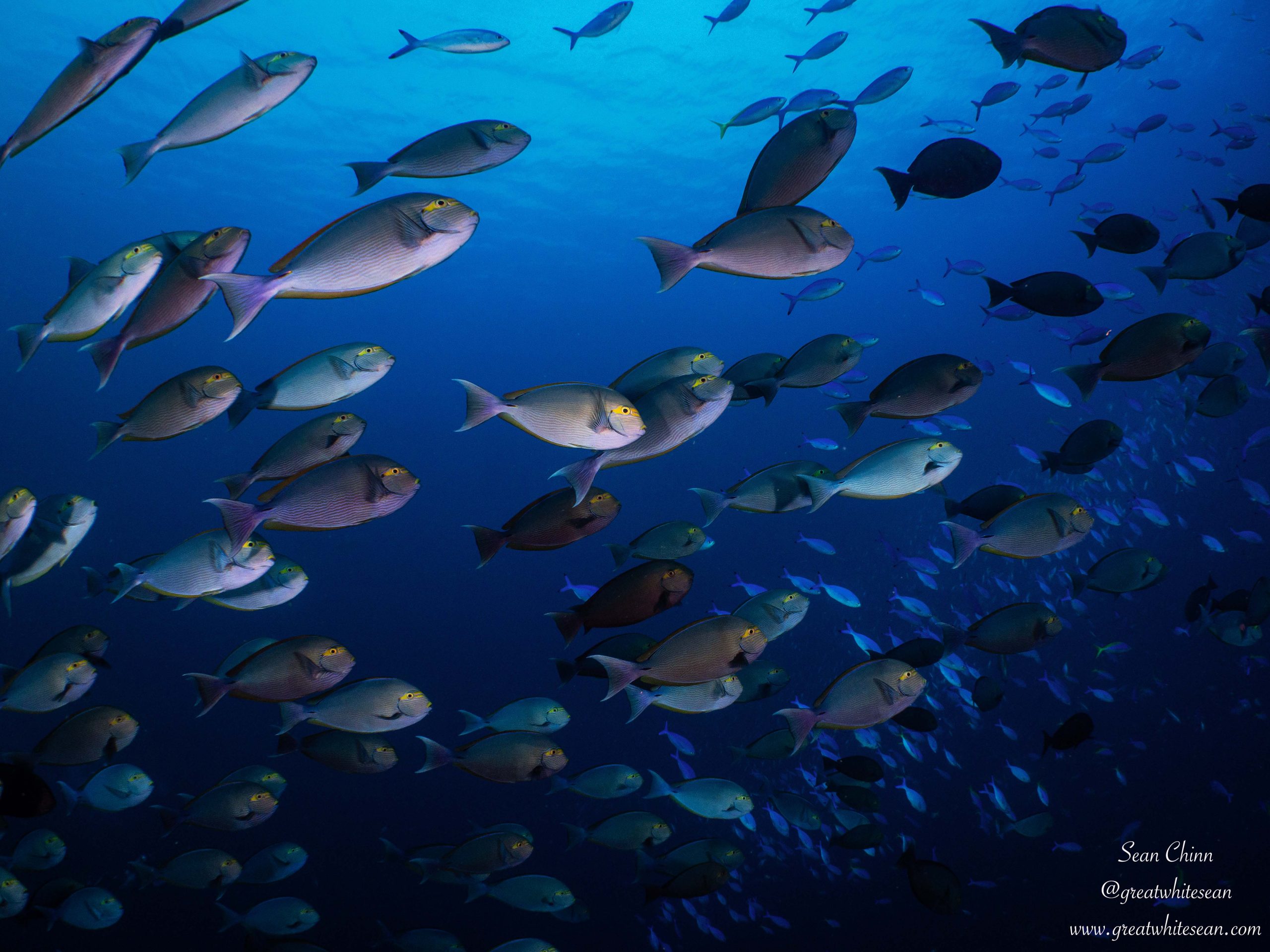
I was more than psyched for day 3. With a dive full of life to start with at ‘Castle Rock,’ followed by what should be an adrenaline-fuelled drift at ‘The Cauldron’ aka ‘Shotgun’, It was sure to be an adventure. Sure enough, once we descended along the pinnacle at ‘Castle Rock’ to around 25 metres, we were surrounded by an abundance of fish life. Numerous banner fish, schools of fusilier and surgeonfish swam in unison, while the odd friendly batfish would come to check each diver out. A distant school of jackfish were joined by the odd tuna and a circling whitetip reef shark to add the predators to the list of life. It was such fun floating amongst the amount of life before letting the current take us onto the reef. A few macro delights were waiting, as a blue ribbon eel and leaffish were spotted, alongside a friendly hawksbill turtle. This was certainly a dive that didn’t disappoint.
It was time for ‘The Cauldron,’ a notorious dive that struck fear into the hearts of some and was legendary to others. Tales of masks flying off in the current made for a little nerves before descending, but excitement from others about how the drift can shoot you through the channel between Gili Lawa Laut and Gili Lawa Darat. However, it was a little different for my dive and the current was fairly mild in comparison to what I expected. It still had enough current for a nice push through the channel and also provided some great marine life encounters. Another new shark species for me was a major highlight, as I finally got to see and photograph a bamboo shark. It was also the site for our only manta ray encounter of the trip. Unfortunately, the manta had passed my group before we saw it and we only got the tail end as it glided through the current away from us. A smaller mobula ray was also spotted at a distance, and a small school of bigeye trevally before… you guessed it… yet another friendly hawksbill on the safety stop.

Day 3 was becoming the best diving day so far and I’d say the next dive at ‘Golden Passage’ was my favourite wide angle dive of the trip. I just love cephalopods and am a big fan of cuttlefish. Three rather large broadclub cuttlefish at the very start of the dive were more than welcome and provided great photography opportunities. We then had an amazing drift along the passage with a bit more oomph than ‘Shotgun’. More hawksbill turtles along the way, a sleeping bamboo shark in the overhangs, and a dancing school of fusiliers provided extra marine life joys. We finished the diving day with a night dive at ‘Gili Lawa Darat Bay’. Wow!!!! Once again, critters stole the show, along with a rather successful bobtail squid snooted photography shoot for me. Devil scorpionfish, nudibranch, flatworms, shrimps, squat lobsters and juvenile harlequin sweetlips made sure every single minute was interesting.
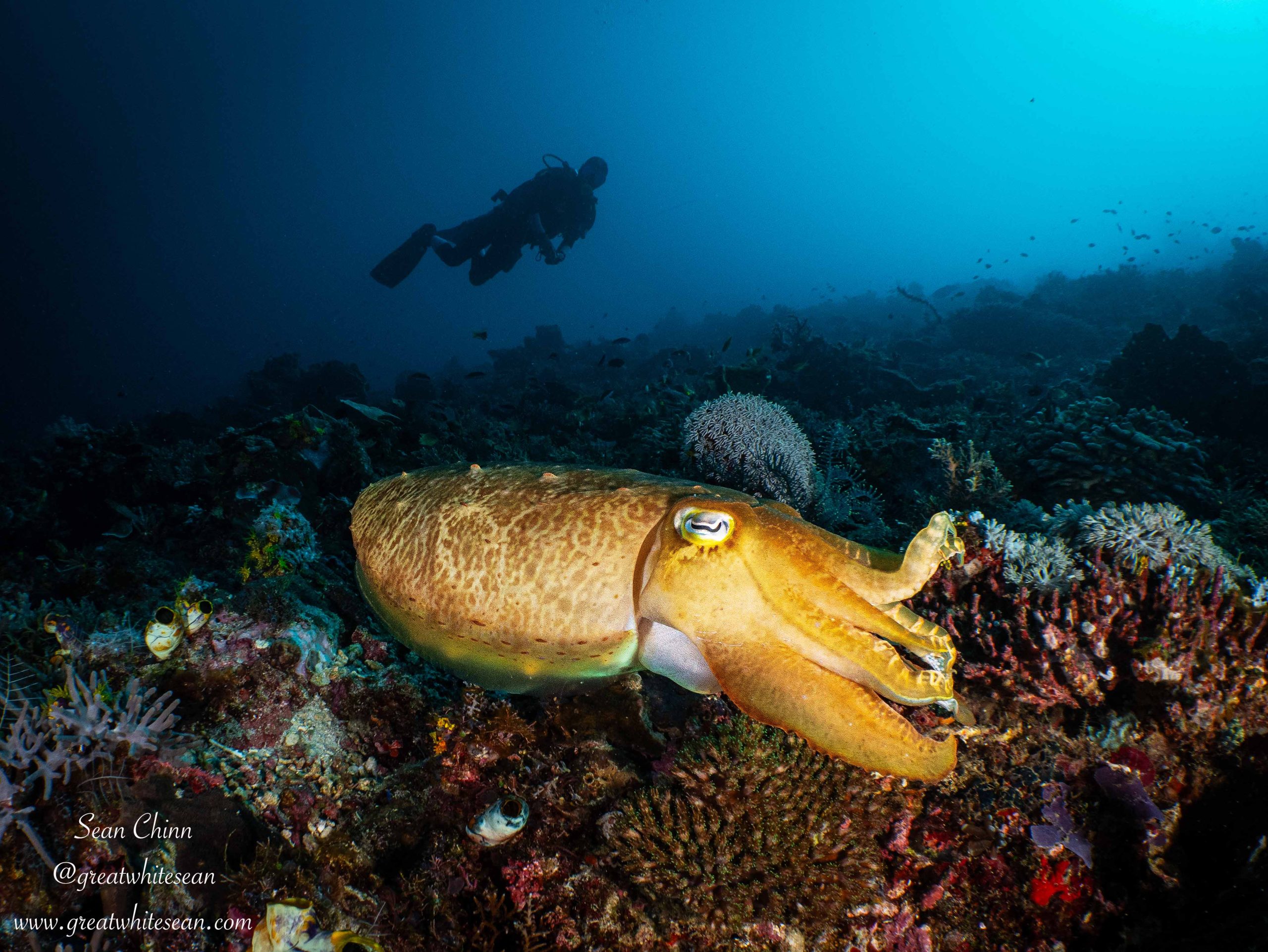
After a short documentary about Komodo dragons on the evening of day 3 to get us excited for seeing them, I was definitely more than excited! Day 4 was a day of giving it our best shot to get some great manta ray action. We started with another beautiful pinnacle reef around ‘Crystal Rock’. Small school of batfish, Napoleon wrasse, whitetip reef sharks, a blacktip reef shark and lion fish greeted us, before we moved on to try for mantas once again. Back to ‘Karang Makassar’ and a drift along the sand and rubble, passing small sections of coral formations that would act as cleaning stations. Unfortunately, we were once again unlucky with our manta ray sightings but this dive did deliver more interesting encounters: A bamboo shark resting out in the open before swimming off, green sea turtles, hawksbill turtles and, once again, a large broadclub cuttlefish.

A final day dive at ‘Mauan’ in the hope of seeing mantas wasn’t much to write home about in this instance. We gave it our best shot with the mantas and that’s all we can ask of the accommodating crew onboard. Unfortunately, wildlife doesn’t always play ball and on another trip you could have some of the best manta ray action of your life. However, the final night dive of the trip more than made up for it. Wow, wow, wow!!! What a dive! With some of the most unique critters you can find. So much so, I have been asked to keep the dive site quiet in fear of the information getting to the wrong people and bad practice being at play. A shame it has to be that way but a necessity at times. While numerous species of nudibranch were spotted on the dive, it was the elusive ghost melibe that stole the show. A transparent nudibranch made up of white lines, giving it a skeletal appearance that was hard to photograph but soooo exciting to see!
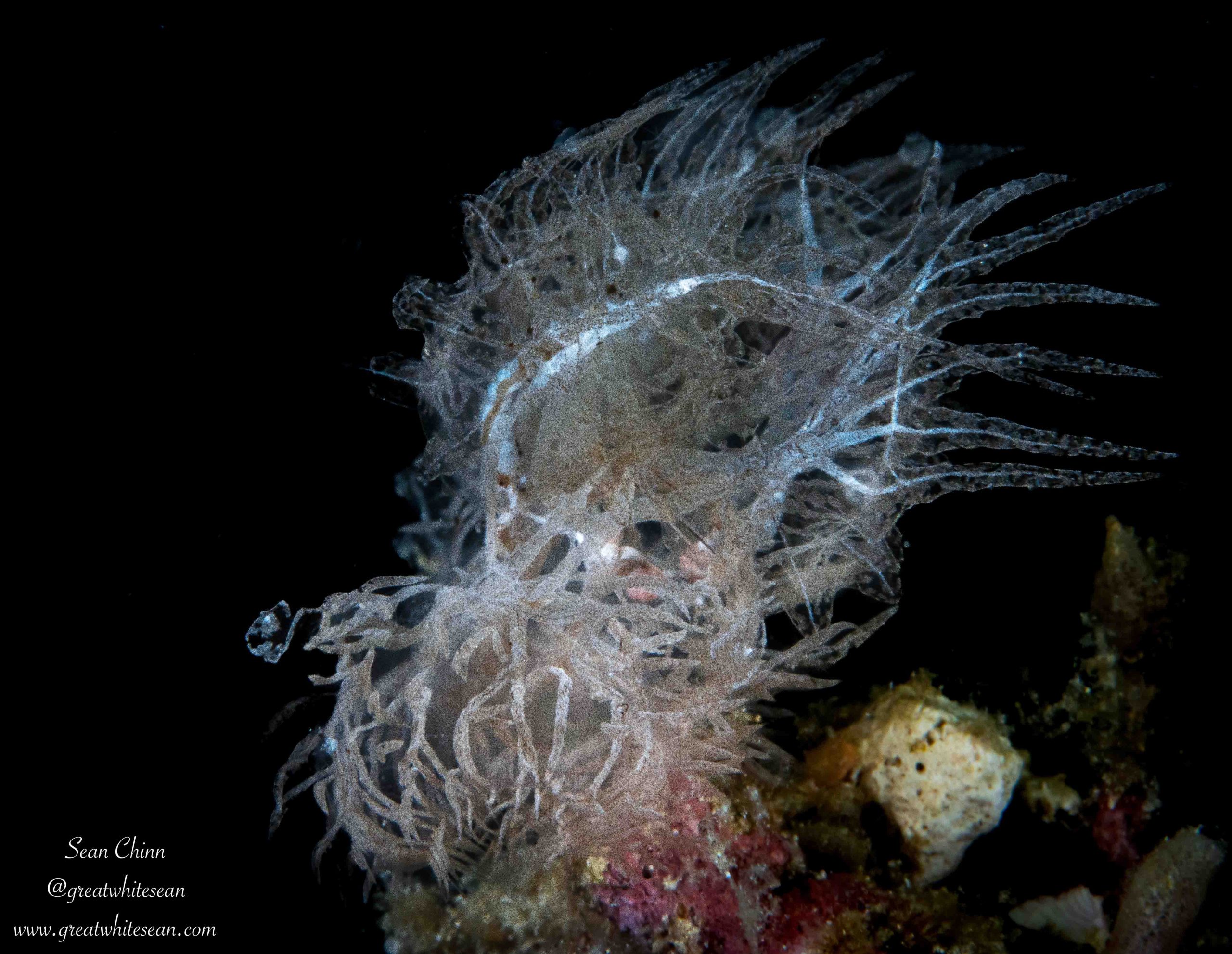
The unique critters didn’t stop there, as another highlight macro critter – the paddle flap scorpionfish – was spotted to the excitement of the guides and cruise director Fareez, who screamed and danced (with excitement!) underwater. Definitely a sought-after critter in the underwater photography world, and we had two join us for the dive. There was a lot of sand and sediment in the water, making it difficult for photography and I wasn’t completely ecstatic with the shots I got, but loved to see another new-to-me species. But guess what? The fun didn’t stop there, as a black frogfish was sitting under some broken coral just next to the scorpionfish. WHAT A DIVE!!!!!!

After such an incredible final night dive, the final day also finished the trip in incredible fashion, ensuring the need to return was firmly there. Starting with a first dive at Pengah, where a banded sea krait hunting throughout the reef was a great start, and more colourful coral formations around the pinnacle, with amazing hard coral just below the surface. It was a dive for wide angle and macro, as ladybugs, different nudibranch, and a leaf scorpionfish were found. As well as a large octopus working its way through the reef before hiding when we locked eyes. The final dive really put the icing on the cake. It was a macro dive amongst sand and rubble: numerous nudibranch again dazzled, with the ‘Pikachu’ nudi my favourite. Peacock mantis shrimp, spearing mantis shrimp, longhorn cowfish, orangutan crab, squat lobster and shrimp ensured a special dive before the grand finale – a thorny seahorse. What a dive and what diving for my five days in Komodo National Park.
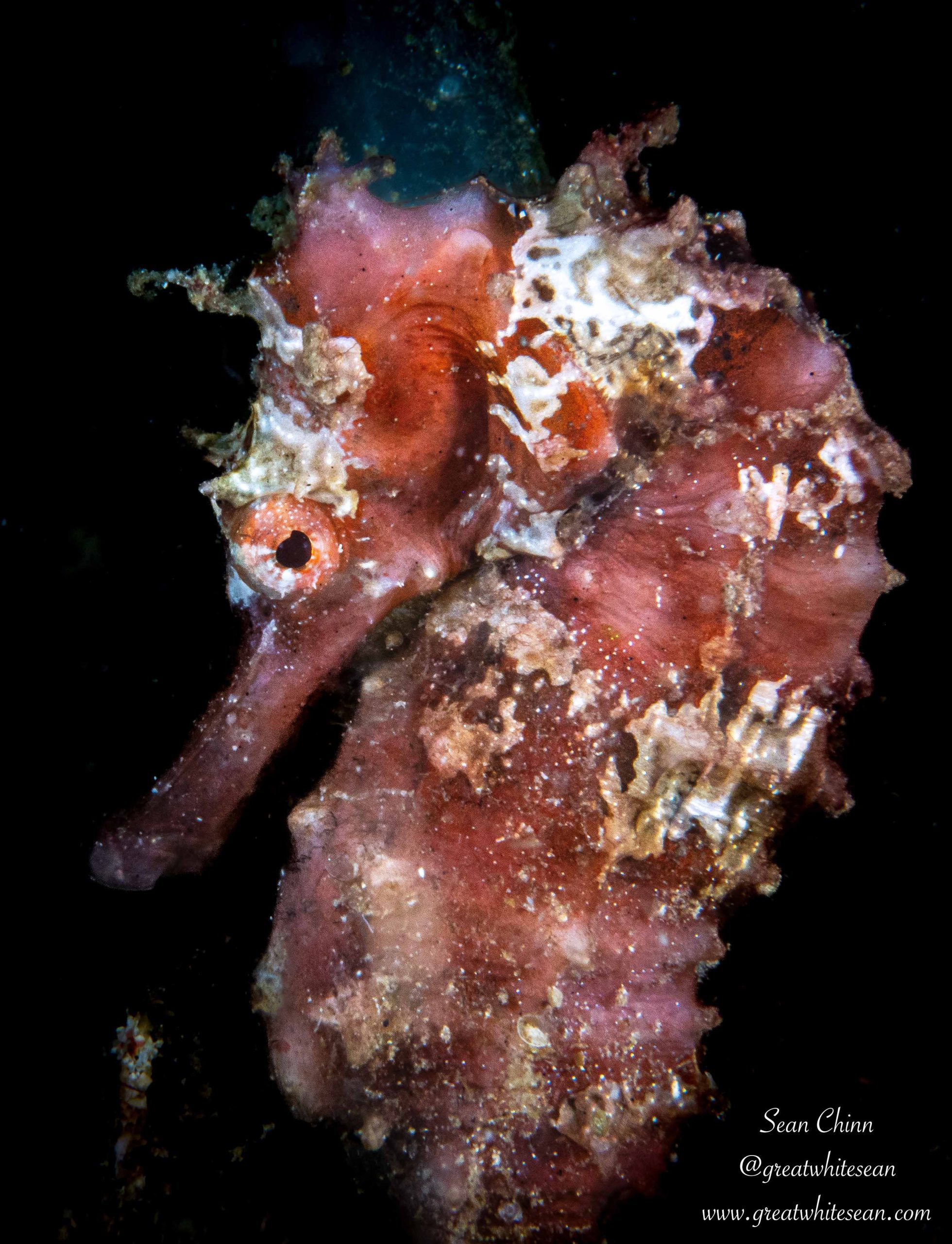
Well, the diving might have been over, but the trip certainly wasn’t. In fact, it was time for one of the tours I’d been looking forward to the most. Time to see Komodo dragons on Rinca Island. As much as I love liveaboards, it’s always nice to get back on land. A jetty led us onto a boardwalk path, where within minutes we laid our eyes on our first dragon, before getting closer to the information centre and seeing the big male that commands the area. Sprawled out on the floor, his size was immense. A great start but I longed for those close encounters and not looking down from a platform.
We were soon through the information centre and onto the wild ground to start our very short trek. We didn’t need to go far at all as a resting large female was just next to the information centre, followed by a small juvenile who came running through stealing all the attention. It was a little cutie and fun to see and photograph. Being a photographer, you always have images in mind before you go somewhere. I was desperate to get a large dragon postured up facing or walking to the camera. I quickly realised that these were lazy animals in the midday sun (as am I). It’s too hot and they risk overheating if they’re too active. I began to lose hope for the shot I wanted, as we trekked a short while up the hill and found another resting female. Amazing to see once again before it was all too soon ready to leave. I could have trekked so much more of the island.
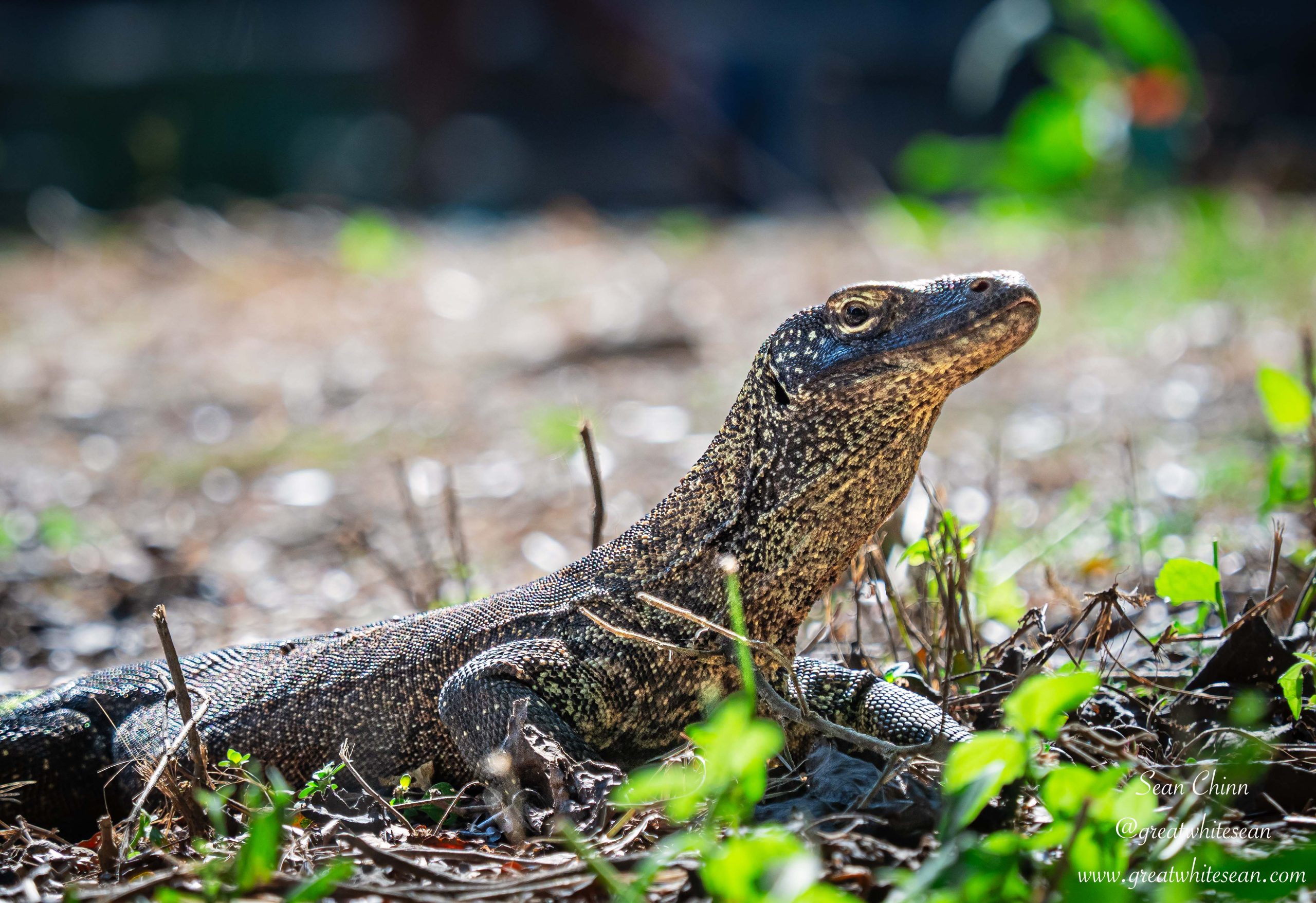
As we waited around the outside seating area of the information centre, I was going through my shots with Fareez and explaining the shots I was hoping for. He said maybe I would get lucky while we waited for the others to explore the gift shop. I knew I didn’t have long. Suddenly, some commotion back outside on the wild ground caught my attention. DOUBLE JACKPOT!!! I went flying out of the gate and there was a dragon walking directly towards me. Postured up, showing off its muscles, only made better by the fact that it was the huge male that swaggered into his arena. Showing off to his adoring crowd. I was completely made up and thankfully got some shots I was happy with. He slowly walked around using his tongue to taste all the flavours, before finally slumping on the ground, sprawled out in the shade.
My trip was now complete, or so I thought. I got what I wanted and was happy to return to my family completely content (apart from losing my drone that is!) That was until the grand finale, the little extra I didn’t know I needed, but it’s always those moments that separate a great trip from an unbelievably fantastic trip. The little extras that make you long to return.
Moored up at Pulau Kalong under an amazing sunset, we waited for the show to start. A spectacle that only nature can deliver soon ensued, as thousands upon thousands of flying foxes left their daytime roost on the island. Engulfing the orange sky with black silhouettes akin to the batman sign. They just kept coming and coming for the next hour or so before we enjoyed an amazing BBQ dinner on the top deck and an incredible show of songs and dance from the amazing crew. Another fantastic trip onboard La Galigo and I can only hope I’ll be back soon.
For more information about diving in Komodo:
Sean Chinn Instagram: @greatwhitesean
Email: sean@greatwhitesean.com
Whatsapp: +62 812 2000 2025
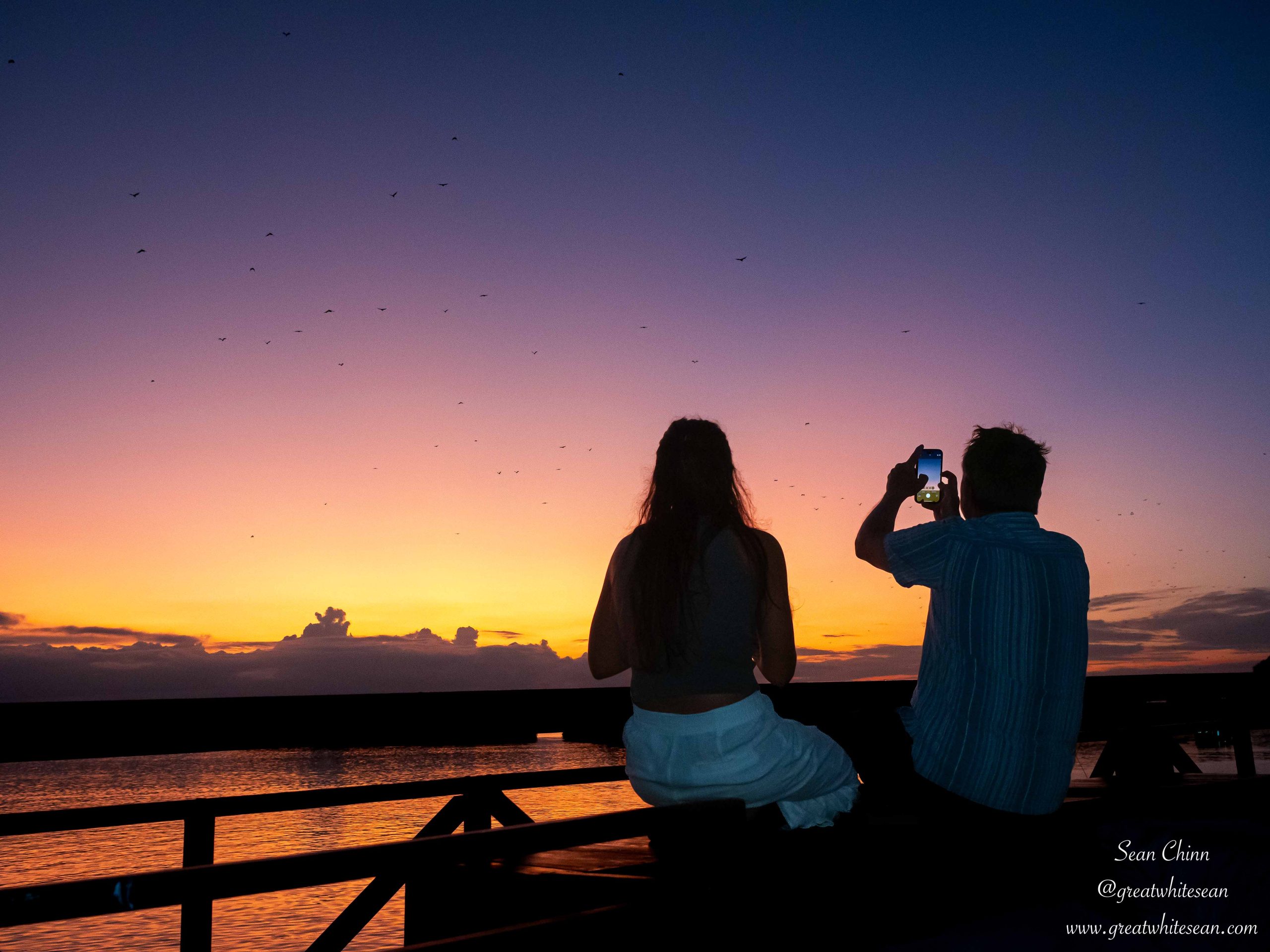
Blogs
A Welcome Return (Part 1)

After an incredibly successful trip onboard La Galigo last October exploring Raja Ampat, I was so happy to jump back onboard. This time exploring another bucket list destination – Komodo National Park.
Strangely, it’s not the underwater world around Komodo that makes it such a bucket list destination for me. Growing up fascinated with the biggest species of each animal, the Komodo dragon has been a lifelong ambition for me to see. I was so excited to now get the opportunity, while also knowing the diving around the National Park would be way more than an added bonus. In my mind, Komodo was synonymous with crazy currents, mantas and some suspect visibility at times. I was expecting really tricky adventurous diving. What I found, was actually very surprising to me and left me with a very pleasant content feeling after the trip. Let’s find out what La Galigo’s Jurassic Komodo trip had in store…
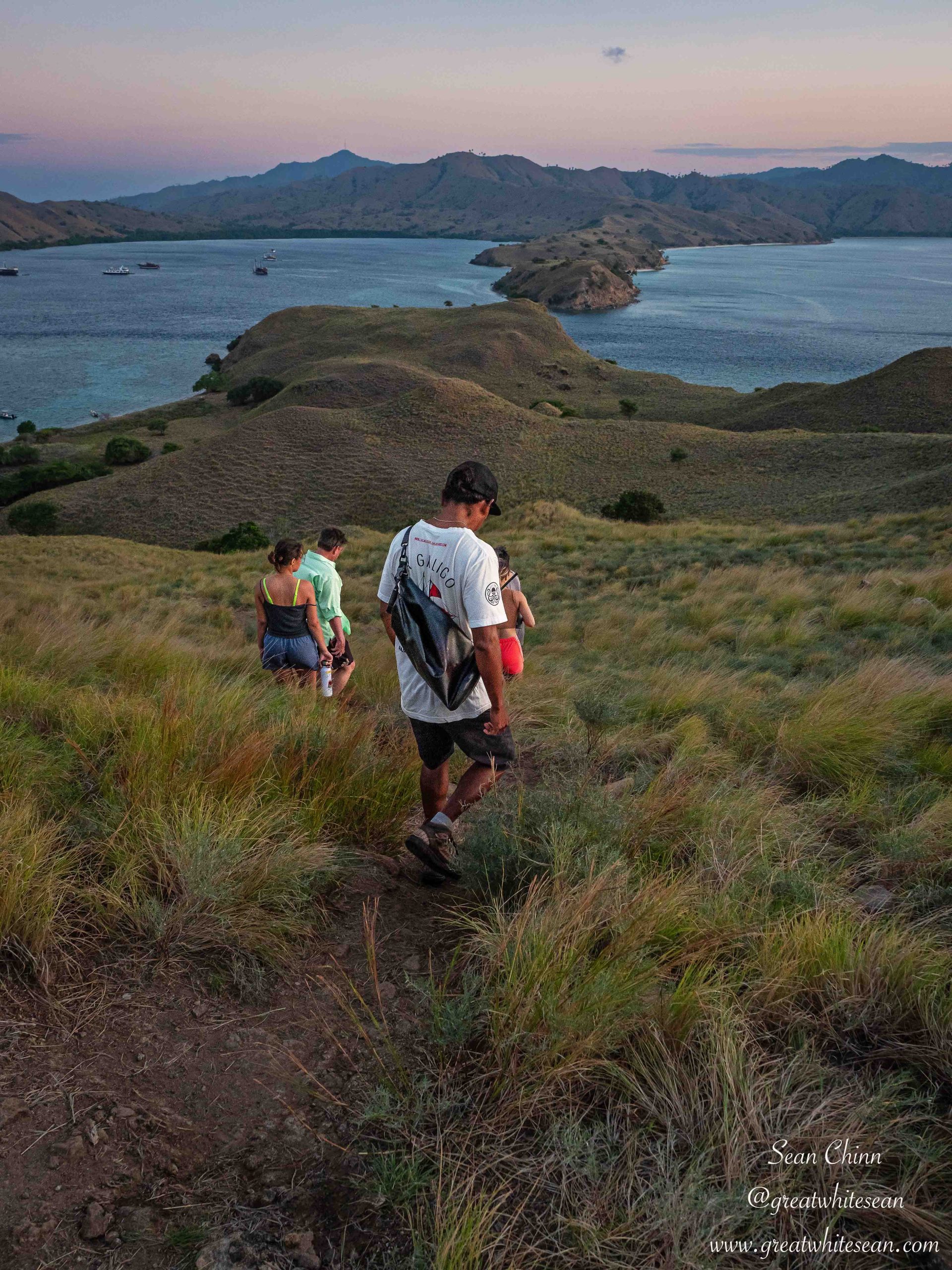
I was on a much shorter trip this time (6D/5N) compared to my Raja trip last year. Now, I’m going to try hard not to compare Komodo with Raja Ampat, but it is hard not to, after doing both trips relatively close in time to each other. However, what I found were two places that complimented each other so well. Their differences are part of their charm and the reason why both are must-do trips. This was evident in the contrasting landscape while exploring the islands around Komodo. The drier climate creating stunning rugged savannah islands rising from the clear blue waters. Covered in a mixture of yellow and green grass, creating a beautiful golden glow at sunrise and sunset. With isolated trees creating a focal point and hillsides leading into idyllic white sand beaches. Another breathtaking area to explore and no better way than to sail from island to island.
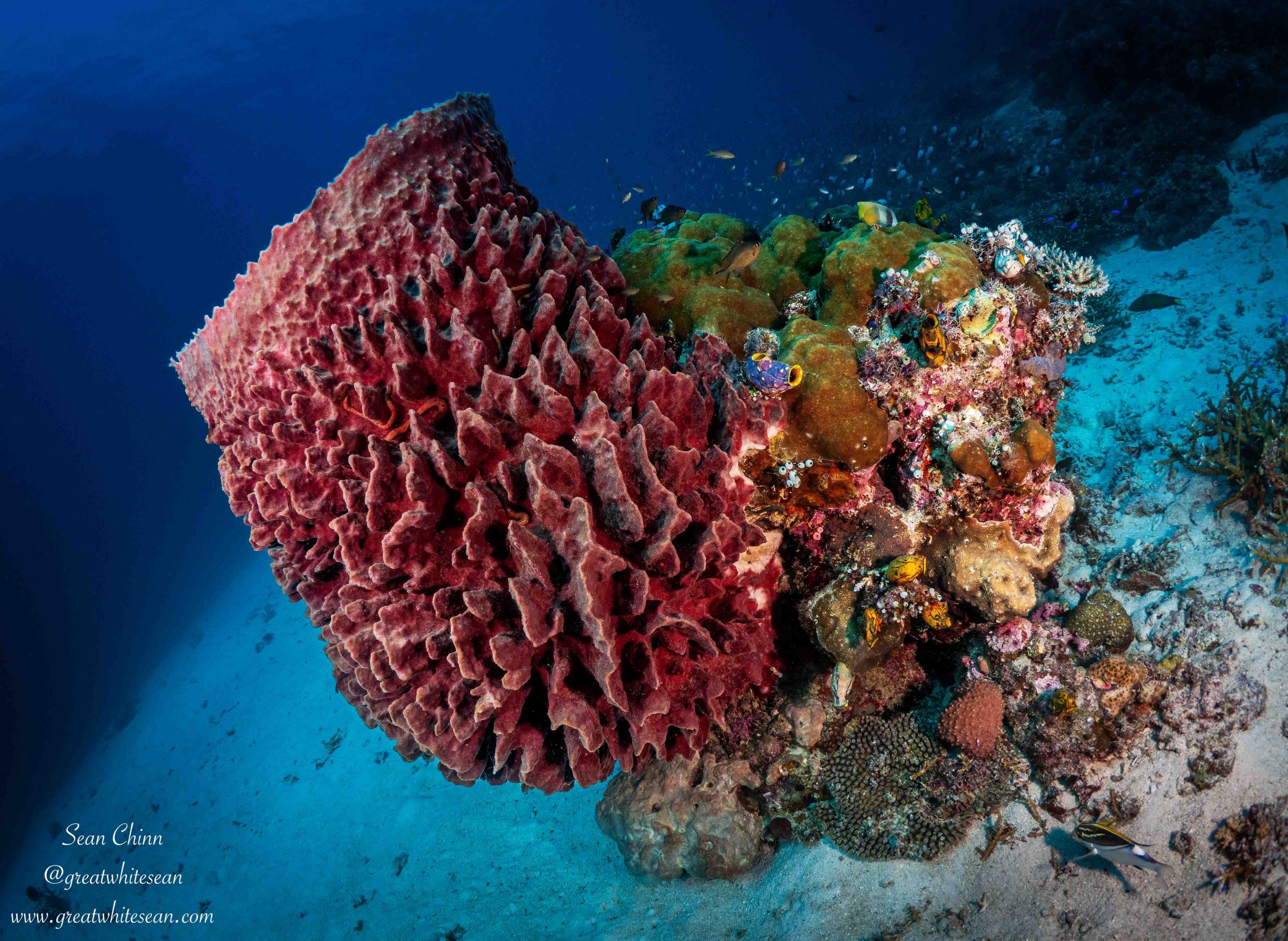
11 guests were onboard for my trip and diving was split into three groups, no more than four divers with each dive guide. A spacious dive deck plenty big enough for the number of guests onboard and two speedboats transporting us to each dive site. An extremely helpful crew providing a comfortable journey and making sure we barely had to lift a finger. The food onboard was again super delicious, with the Soto Ayam being a highlight, while the beef rendang again had my mouth watering. With spacious rooms throughout and comfortable beds and pillows, another relaxing stay was on the agenda between dives. Speaking of dives, let’s see what underwater had in store…
Apologies!! I am going to compare Komodo and Raja Ampat one last time, this time in relation to the check dive. In my mind, before I had dived both, I had Komodo as the place with crazy currents and sometimes poorer visibility, with Raja as the opposite. My check dives couldn’t have been further from what I had imagined. While my dive in Raja was limited vis and a relatively strong current, diving in Komodo started super relaxed, with next to no current and some amazing visibility at ‘Sebayor Kecil’. Such a pleasant start to my Komodo trip with beautiful reefs full of healthy hard and soft coral. Yellow snapper swimming in unison, lion fish, crocodile fish and a blue spotted stingray welcoming me nicely to life underwater in Komodo.
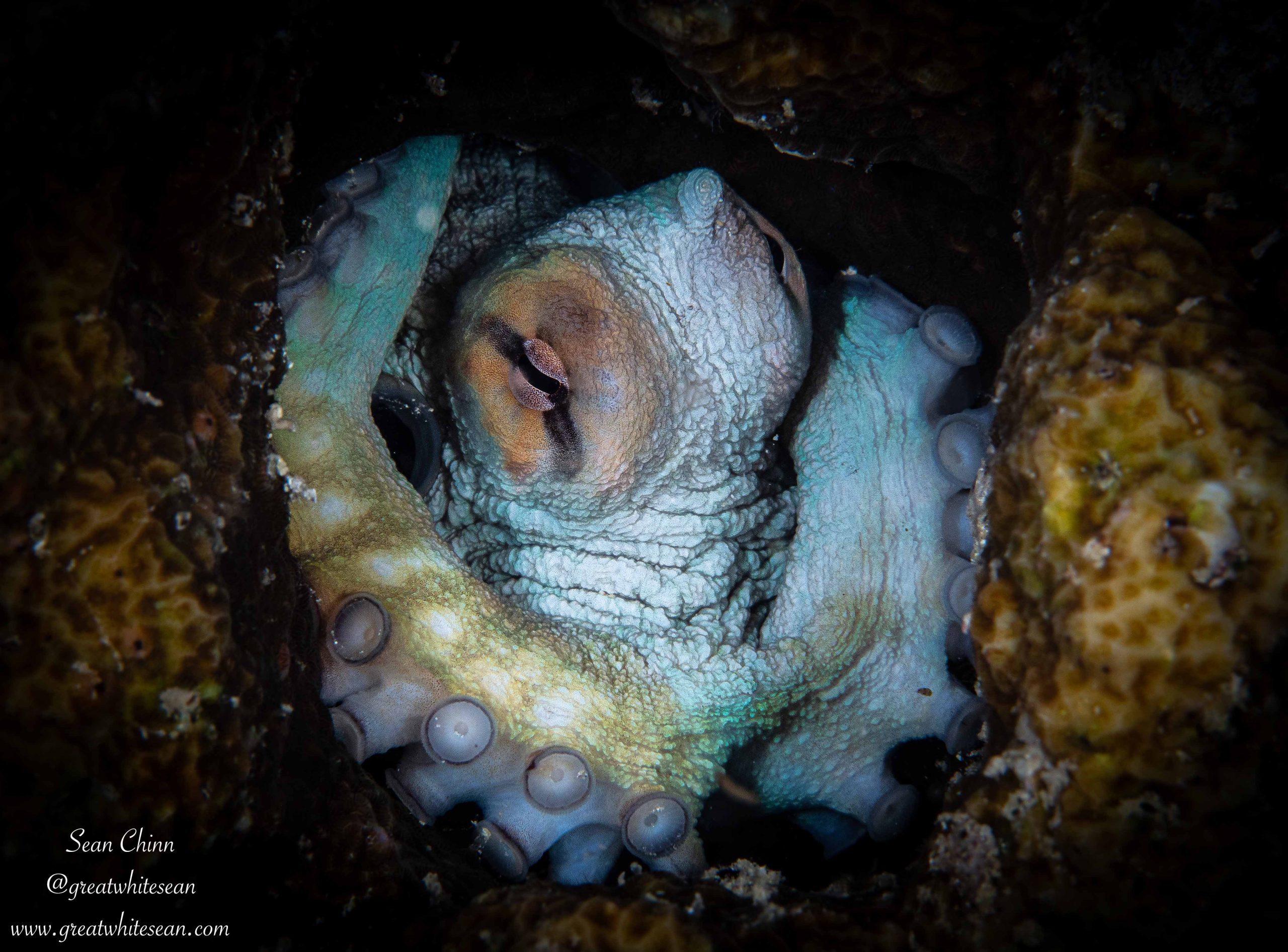
Following on from such a relaxed dive, I soon realised it was the little critters that were going to steal the show in this beautiful paradise. The first night dive at ‘Sebayor Besar’ showed me what treats I had in store for the trip. With a very small red octopus only few centimetres in size, followed by a larger reef octopus. Nudibranch, peacock mantis shrimp, crabs and more made sure every minute of the dive was enjoyed before getting back onboard. The night wasn’t finished, as a fun game of ‘Cards Against Humanity’ broke the ice with everyone onboard and was the perfect example of why I love liveaboards so much. Meeting people from all walks of life while confined to life onboard broadens your horizons. It was a great laugh with a great group.
The next day followed on with some more beautiful reefs full of life. ‘Tarawa Besar’ and the magical ‘Batu Balong’ were the dive sites of choice. A mixture of stunning hard coral formations and vibrant soft coral dazzled like a Van Gogh painting full of colour. It was also the introduction of some friendly turtles, in particular a number of hawksbill that quite happily swam between divers and allowed for close interactions. A grumpy green sea turtle was the highlight for me, as it rested amongst the coral in the final moments of ‘Tarawa Besar’. I just love their patterned shell.
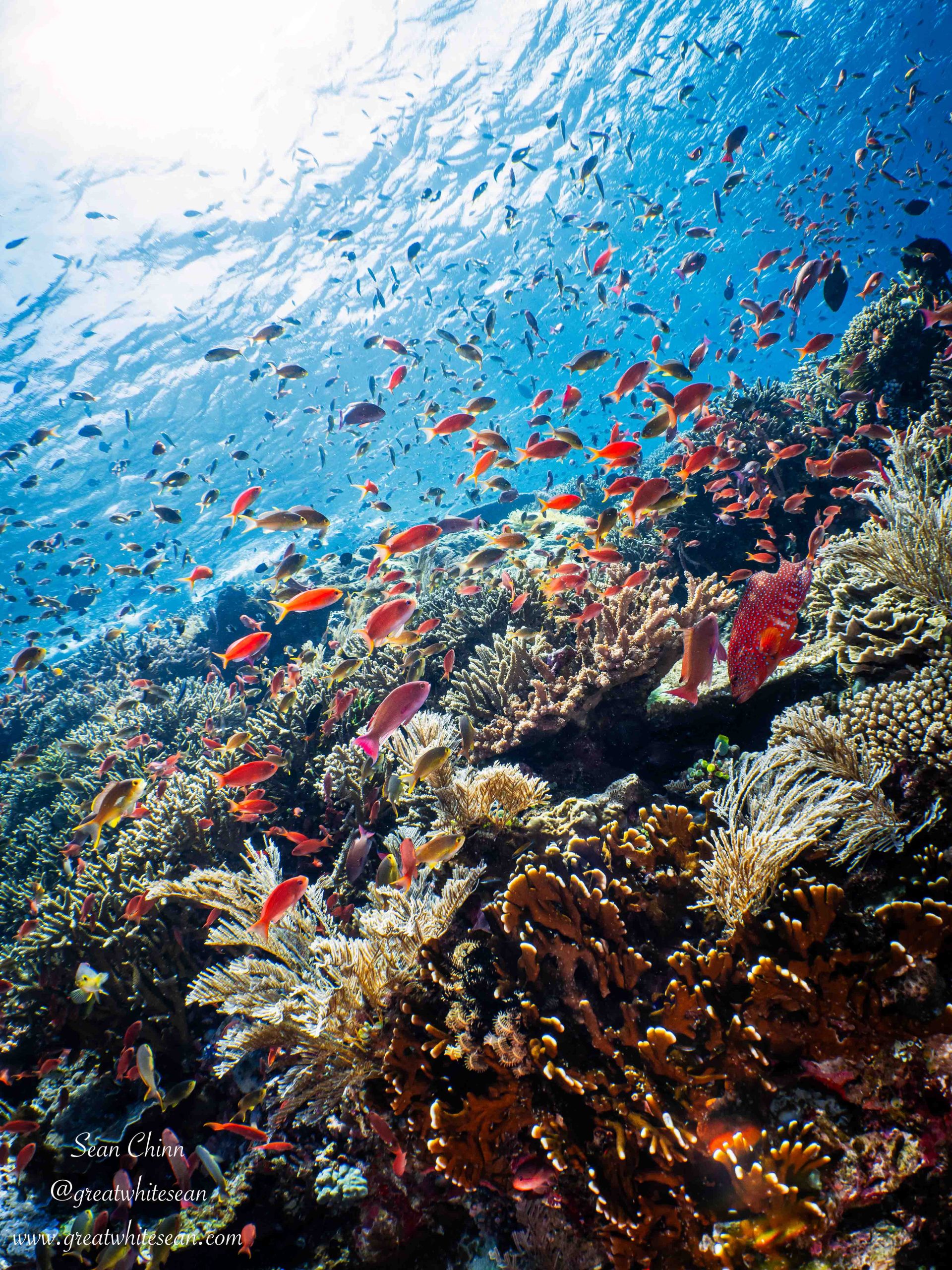
Whitetip reef sharks, scorpionfish, a giant pufferfish, moray eels and more made sure it wasn’t all about the turtles. And, to be honest, the dancing anthias on top of ‘Batu Balong’ amongst the pristine hard coral provided the bliss on the safety stop. A delightful end before disappointedly, I finally got unlucky with manta rays on dive three. We were at ‘Karang Makassar’ in the hope of drifting along the rubble and sand to get lucky with a moment with some majestic mantas. I’m normally quite lucky with manta rays and have had some pretty wild encounters around the world over my diving life. However, this time nature unfortunately didn’t play ball. Fingers crossed for next time!!
Thankfully it didn’t take away from what was another amazing day in Komodo. A sunset trek on Gili Lawa Darat got us back on land and we enjoyed the amazing scenery. Incredible views over the bay and the island resembling a snake head were made even more enjoyable by yet another gorgeous sunset. With deer roaming free, it was a great mini adventure, getting a close-up view of these rugged savannah islands before another fantastic night dive at Komodo Bay.
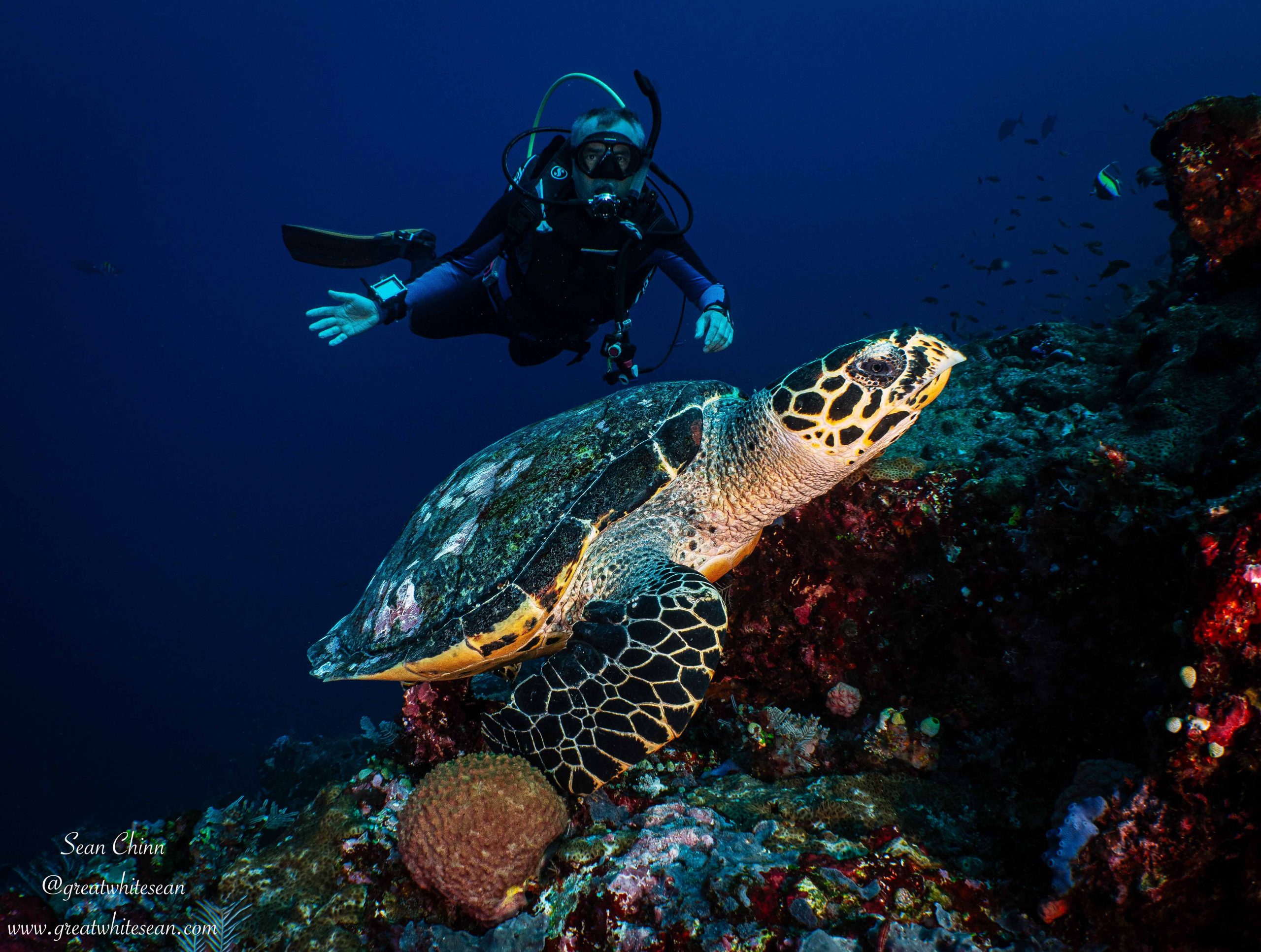
Numerous nudibranch were spotted and even a flatworm working its way over a scorpionfish’s head and eye provided some funny entertainment. I’m a sucker for a cuttlefish, so getting the chance to see and photograph a small one is always special. However, the most unique critter was the Lembeh sea dragon. Such a cute and surreal-looking creature that unfortunately wasn’t in a great position for photography. Hopefully I’ll get another chance one day and capture its unique beauty.
What a great start to life in Komodo onboard La Galigo. Be sure to stay tuned for part 2 and see what delights awaited us.
For more information about diving in Komodo:
Sean Chinn Instagram: @greatwhitesean
Email: sean@greatwhitesean.com
Whatsapp: +62 812 2000 2025




